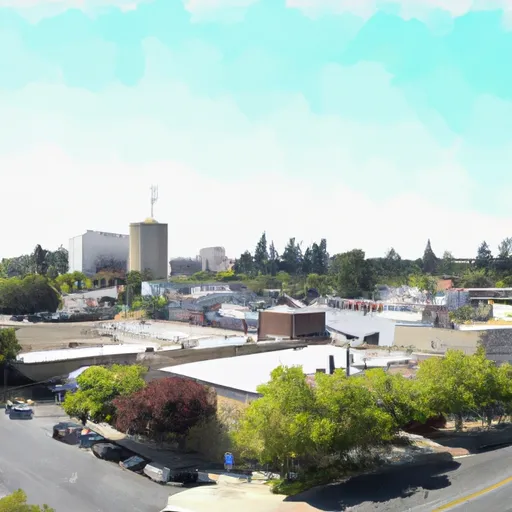-
 Snoflo Premium
Snoflo Premium
Get unlimited access to all our content
With no Ad interruptions! - Start Your Free Trial Login with existing account
Woodland
Eden Index
Climate
9.3
•
Recreation
3.1
•
Community
2.6
•
Safeguard
5.5/10

Woodland, California is a charming city located in Yolo County, in the heart of the Sacramento Valley. Woodland experiences a Mediterranean climate with hot, dry summers and mild, wet winters. Summers are characterized by high temperatures reaching up to 95°F (35°C), while winters are generally mild with temperatures around 55°F (13°C). The region typically receives around 20 inches of precipitation annually, mainly occurring during the winter months.
Woodland is renowned for its hydrology constituents, primarily due to its proximity to the Sacramento River and numerous creeks. The Sacramento River provides a vital source of water and supports a diverse range of wildlife. Yolo County is also home to the Yolo Bypass Wildlife Area, a wetland habitat that plays a crucial role in flood protection and provides excellent opportunities for birdwatching and hiking.
Outdoor enthusiasts will find plenty of recreational opportunities in Woodland. The city boasts several parks and green spaces, including the beautiful Woodland Opera House State Historic Park and the Gibson House Museum. Additionally, Woodland is surrounded by picturesque farmlands, offering opportunities for biking, jogging, and exploring the countryside. Nearby Cache Creek provides further outdoor adventures, such as fishing, boating, and wildlife observation. Woodland's climate, hydrology constituents, and outdoor recreational opportunities make it a delightful destination for nature lovers.
What is the Eden Index?
The Snoflo Eden Index serves as a comprehensive rating system for regions, evaluating their desirability through a holistic assessment of climate health, outdoor recreation opportunities, and natural disaster risk, acknowledging the profound impact of these factors on livability and well-being.
Climate Health Indicator (CHI): 9.3
Woodland receives approximately
544mm of rain per year,
with humidity levels near 78%
and air temperatures averaging around
17°C.
Woodland has a plant hardyness factor of
9, meaning
plants and agriculture in this region tend to thrive here all year round.
By considering the ideal temperature range, reliable water supplies, clean air, and stable seasonal rain or snowpacks, the Climate Health Indicator (CHI) underscores the significance of a healthy climate as the foundation for quality living.
A healthy climate is paramount for ensuring a high quality of life and livability in a region, fostering both physical well-being and environmental harmony. This can be characterized by ideal temperatures, reliable access to water supplies, clean air, and consistent seasonal rain or snowpacks.
Weather Forecast
Streamflow Conditions
Lower Sacramento
Area Rivers
Lower Sacramento
Snowpack Depths
Lower Sacramento
Reservoir Storage Capacity
Lower Sacramento
Groundwater Levels
Recreational Opportunity Index (ROI): 3.1
The Recreational Opportunity Index (ROI) recognizes the value of outdoor recreational options, such as parks, hiking trails, camping sites, and fishing spots, while acknowledging that climate plays a pivotal role in ensuring the comfort and consistency of these experiences.
Access to outdoor recreational opportunities, encompassing activities such as parks, hiking, camping, and fishing, is crucial for overall well-being, and the climate plays a pivotal role in enabling and enhancing these experiences, ensuring that individuals can engage in nature-based activities comfortably and consistently.
Camping Areas
| Campground | Campsites | Reservations | Toilets | Showers | Elevation |
|---|---|---|---|---|---|
| Yolo County Fair RV | None | 62 ft |
Catastrophe Safeguard Index (CSI):
The Catastrophe Safeguard Index (CSI) recognizes that natural disaster risk, encompassing floods, fires, hurricanes, and tornadoes, can drastically affect safety and the overall appeal of an area.
The level of natural disaster risk in a region significantly affects safety and the overall livability, with climate change amplifying these risks by potentially increasing the frequency and intensity of events like floods, fires, hurricanes, and tornadoes, thereby posing substantial challenges to community resilience and well-being.
Community Resilience Indicator (CRI): 2.6
The Community Resilience Indicator (CRI) recognizes that education, healthcare, and socioeconomics are crucial to the well-being of a region. The CRI acknowledges the profound impact of these elements on residents' overall quality of life. By evaluating educational resources, healthcare accessibility, and economic inclusivity, the index captures the essential aspects that contribute to a thriving community, fostering resident satisfaction, equity, and social cohesion.

